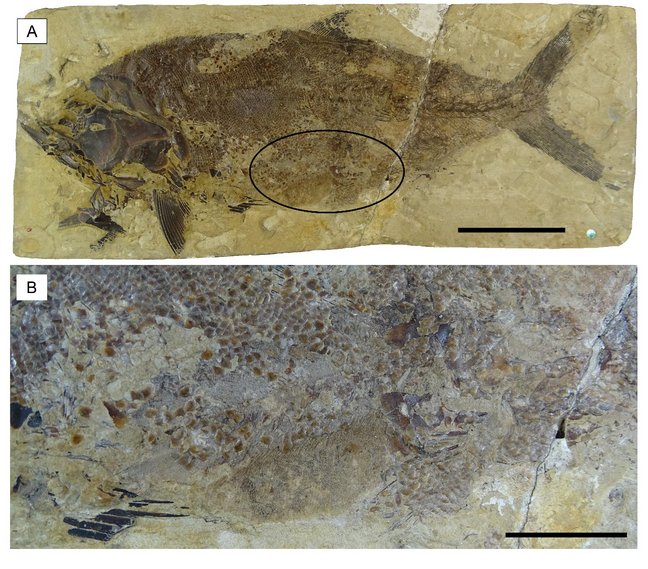Despite its gruesome portrayal in Hollywood movies as well as its universal condemnation in our civilised society, cannibalism (conspecific predation) is surprisingly common as well as widespread in nature. Cannibalism has been observed at almost every stage of the natural ecological hierarchy ranging from single-celled organisms like amoebae all the way up the food chain to large carnivores like bears and lions. However, direct evidence of cannibalism in fossils is extremely rare. However, they are very important as they help palaeontologists to better understand ancient food webs in extinct ecosystems.
Fossil cannibalism, in which the prey of one species is preserved in the stomach of another individual of the same species, is best known from fossil fishes. However, these associations are extremely rare with no examples yet been identified in the Early Jurassic. Samuel Cooper, palaeontologist at the Natural History Museum in Stuttgart, has now found the first evidence of cannibalism in the Early Jurassic by examining three fossils of the bony fish Pachycormus macropterus.
Pachycormus is widespread in the Early Jurassic of Europe, including in the Posidonienschiefer Formation of Baden-Württemberg. The study analysed three specimens of Pachycormus from the Early Jurassic (Toarcian) of Curcy in northern France. Interestingly, the cannibal fish are not fully grown, as they are all less than 40 cm long (Pachycormus grows up to 100 cm), with the swallowed prey fish being no larger than 8 cm long. Therefore, this is not a case of "adults eating juveniles", but examples of "large juveniles eating smaller juveniles". It's the equivalent of a teenager eating newborn babies!
Because cannibalism is only observed in juveniles, it supports the earlier hypothesis that the juvenile Pachycormus ate exclusively smaller fish, while the adults migrated into deeper waters to catch squid instead.
Astonishingly, despite the wide distribution of Pachycormus in Europe, only specimens from Curcy show evidence of cannibalism. The study hypothesises that the high number of cannibalism at this site and the large number of small Pachycormus fossils infers that the environment was stressed. Meaning that there was an unusually high ratio of Pachycormus predators compared to their normal prey. This resource pressure probably prompted desperate Pachycormus young to indiscriminately cannibalise each other.
In a study, together with Dr Erin Maxwell (SMNS), a specimen of Pachycormus that had suffocated on an ammonite shell has already been described (Cooper and Maxwell, 2023).
Science News "death by ammonite"
